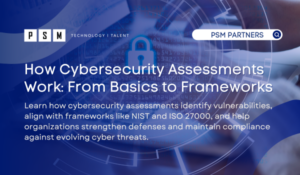Table of Contents
Toggle As organizations navigate the new normal of hybrid work, it leaves room for hacking and breaching incidents. While breaches in large enterprises are what normally get recognized, the reality is small and medium-sized organizations are faced with the most incidents. The costs associated with cybersecurity hacks are projected to increase to $10.5 trillion by 2025; indicating a 15% growth year over year. The list of hacked organizations grows daily. It is essential that your organization be prepared to take the next steps should your system(s) become compromised. A few Indicators of Compromise (IoC) you should look out for:
- Suspicious email requests or notifications
- Uncommon outbound network traffic
- Reduced network speed
- Large amount of connection attempts to your network
- Anomalies in privileged user account activity
- Substantial numbers of request for the same file
- Geographical irregularities
- Database extractions
- Unexpected patching of systems
What to do during and after a cyber attack
Circumstances vary depending on the type and size of a hack and breach. In the wake of an attack, here are the steps you can follow (post-incident identification):- Verify the attack with an incident response plan and your incident response team
- Act Quickly
- Isolate the offender
- System restoration
- Disclose the Breach to Necessary Groups
- Plan against the next attack by taking preventative measures
Cybersecurity Consulting at PSM
At PSM, we can help you strengthen your security with our cybersecurity consulting services. With these services, we will assess your current situation with your cybersecurity to identify ways to strengthen your security and address vulnerabilities. Our professionals will suggest effective solutions for you to implement to ensure that your system is secured. Our IT security consulting services are ideal for businesses and institutions that want to ensure that they are taking the right actions to secure their network. Our cybersecurity consultants are experts when it comes to protecting your IT system. Our professionals at PSM can provide cybersecurity assessment services in which we will evaluate your current security situation. Our network security assessments will evaluate the effectiveness of your security solutions and help identify any weaknesses that could leave your IT system vulnerable. After our cybersecurity audit, we will inform you of any vulnerabilities we find and offer suggestions for solutions that will help strengthen the security of your system.Related Insights
What is an SOC Audit?
If your organization handles sensitive data or provides services to...
Read MoreHow Cybersecurity Assessments Work: From Basics to Frameworks
Cybersecurity threats are becoming more sophisticated and widespread, putting sensitive...
Read MoreFuture-Proof Your Technology: Why You Should Consider a Computer Upgrade Every 3 Years
Key Takeaways Three-Year Upgrade Cycle Is Ideal Upgrading business computers...
Read MoreRecovery Time Objective (RTO) vs Recovery Point Objective (RPO): What’s the Difference and Why It Matters for Your Business
Key Takeaways RTO Explained RTO (Recovery Time Objective) is how...
Read More




